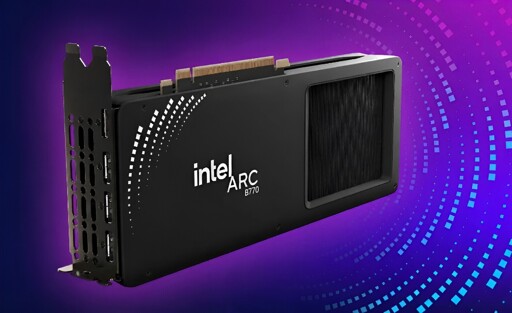MHLoppy
Currently studying CS and some other stuff. Best known for previously being top 50 (OCE) in LoL, expert RoN modder, and creator of RoN:EE’s community patch (CBP). He/him.
(header photo by Brian Maffitt)
- 54 Posts
- 60 Comments

 81·2 months ago
81·2 months agoImo that’s as much a problem of the sorting algorithm as it is with a single community blasting out too many posts at once without any consideration for how current frontends are unable to usefully integrate that into people’s feeds. A couple of years ago nanoUFO was being a bit (subjectively) overenthusiastic about posting - I counted and [email protected] had 40 posts at once from them and it made the first couple pages of my feed basically unusable for a while.
Scaled is also probably better suited for your subscribed feed rather than /All.
Thank you for leaning into the account name roleplay now and then :P

 3·2 months ago
3·2 months agoHonestly once they made it clear that holo-Thatcher was giving consent I thought they’d be redeemed in other’s eyes.
What are your blocking habits?
I made it through nearly two years and eventually caved after I made the mistake of arguing in favor of the truth, supported by video evidence and a fact check from an internationally recognized fact-checking organization only to be told to “fuck off”, a second user said that they enjoyed pissing on my shoe(s) in their personal fight against truth, and some other catastrophically braindead takes. I generally don’t like the blocking approach for opinions I don’t agree with because everyone has differing views and also people have bad days and that’s just life. However, being actively hostile to the truth and being extremely confrontational about it was a bridge too far for me and it was either blocking a few mouldy potatoes in an attempt to keep things tolerable or getting off the threadi/fediverse so I decided to give the former a whirl.
If you do block a lot of people, has that affected your experience?
Thankfully haven’t felt the need to block many, so the only thing I’ve really noticed is that occasionally one of the blocked users comments in the thread for something I’ve submitted (which I don’t get a notification for and can’t see) - but then someone unrelated replies to them and then I get a notification for a comment chain which I can’t actually load. It took me a while to even figure out why I was getting these “ghost” notifications.

 4·2 months ago
4·2 months agoScience has gone too far
I’m a very casual gamer, and not looking for an mmo, or anything particularly challenging.
Putting aside anything else, I doubt FTL meets the requirements just because it’s firmly on the hard side of things. Might be a good suggestion to check out for some others reading the thread though!
but the combat is a bit too hard for me
I haven’t really played since I was at most a teen so maybe the later battles aren’t actually as hard as I remember, but if this is a bottleneck then OP may find later sections of the game’s main story frustrating. I think the game itself is a good vibe fit and has broadly aged well, but something to keep in mind for OP!

 4·2 months ago
4·2 months ago“for life” covers that eventuality :P

 6·2 months ago
6·2 months agoWhat about AV2 + Opus though!?

 101·2 months ago
101·2 months agoIt’s a bit excessive for my taste as well. Traditionally if you felt the need to cut this much just to make the sentence come out the way you want, you’d just do another take instead of making this many cuts in post. Over-cutting of spacing also makes the pacing a bit too “word-vomit” rather than “polished” imo.
I imagine this is more normalized in stereotypically “zoomer” presentation of video content, but it might also just be this guy (or their editor’s) style.
Before posting I read the recent annual reports which she advertises having a hand in as part a push for greater transparency, but was still left very unsatisfied personally (half the budget – over $90 mil – just hand-waved away as “infrastructure” spending? Really?). So despite being an improvement, I didn’t feel that the CEO change has had much effect on the scales of “donate vs not”. Perhaps for others it might, but my comment still reflects my best judgement.
I simultaneously believe that Wikipedia is valuable and that it’s not clear that WMF needed $185 million dollars.
As far as I can tell the situation has not significantly changed since “the last time(s)” this was discussed. Wikipedia remains a valuable resource, and WMF continues to aggressively increase both spending and fundraising revenue. Whether you think that means you should donate or not is probably the same answer as it was several years ago for most individuals based on personal preferences.
edit: typo
It’s fine, it’s mostly just a federated software problem. For people on lemmy they can see the image itself in the UI.
For those who don’t see the image embedded, it’s this cursed URL: https://s2.qwant.com/thumbr/474x184/4/1/6e8510687c330d38e894f4a419f5068153b7312148590f6fca6b18001404db/OIP.JY7AimVCBQ6lSbPAKajQCQHaC4.jpg?u=https%3A%2F%2Ftse.mm.bing.net%2Fth%2Fid%2FOIP.JY7AimVCBQ6lSbPAKajQCQHaC4%3Fpid%3DApi&q=0&b=1&p=0&a=0
This is a genuine question and not a passive aggressive one: why make the submission a link to a social media post when that post is mostly just a link to a news site anyway? (you could include link to or even quote the commentary either in the submission body or a comment if you think it’s a valuable addition)
edit: has since been answered in another comment orz, I opened this and then was talking to people for a while before commenting
Don’t worry, you can instead visit this reputable URL: https://cheap-bitcoin.online/scanner-hijacker/malicious-payload/trojan_extractor_tool.msi?firewall=tamper&id=11aa4591&origin=spoof&payload=(function(){+return+undefined%3B+})()%3B&sessiontoken=spoof&useragent=inject
( https://phishyurl.com/ via https://chaos.social/@FlohEinstein/115212955110814540 )
doesn’t allow filtering by number of users or amount of content
It does though?
https://instances.joinpeertube.org/instances?sort=-totalUsers https://instances.joinpeertube.org/instances?sort=-totalLocalVideos


 15·3 months ago
15·3 months agoYo, don’t shit talk the makers of the award winning game Ricochet like that

 10·3 months ago
10·3 months agoI actually think this video is doing a pretty bad job of summarizing the practical-comparison part of the paper.
If you go here you can get a GitHub link which in turn has a OneDrive link with a dataset of images and textures which they used. (This doesn’t include some of the images shown in the paper - not sure why and don’t really want to dig into it because spending an hour writing one comment as-is is already a suspicious use of my time.)
Using the example with an explicit file size mentioned in the video which I’ll re-encode with Paint.NET trying to match the ~160KB file size:
- Original PNG (5,725,123 bytes) https://files.catbox.moe/l2wsxr.png
- Optimized PNG (5,579,693 bytes) https://files.catbox.moe/2dh00n.png
- Lossless WebP (4,504,946 bytes) https://files.catbox.moe/hiephv.webp
- Lossy WebP; default preset, quality 13 (162,820 bytes) https://files.catbox.moe/jnv4tp.webp
- JPEG XL; quality 12, effort 7 (164,859 bytes) https://files.catbox.moe/fylcqa.jxl (your browser probably can’t view this image)
- AVIF; lossless alpha compression [shouldn’t matter], quality 44, very slow preset, 4:2:0 chroma subsampling, preserve existing tile size, do not use premultiplied alpha (164,855 bytes) https://files.catbox.moe/u7q7dn.avif
Hadriscus has the right idea suggesting that JPEG is the wrong comparison, but this type of low-detail image at low bit rates is actually where AVIF rather than JPEG XL shines. The latter (for this specific image) looks a lot worse at the above settings, and WebP is generally just worse than AVIF or JPEG XL for compression efficiency since it’s much older. This type of image is also where I would guess this type of compression / reconstruction technique also does comparatively well.
But honestly, the technique as described by the paper doesn’t seem to be trying to directly compete against JPEG which is another reason I don’t like that the video put a spotlight on that comparison; quoting the paper:
We also include JPEG [Wallace 1991] as a conventional baseline for completeness. Since our objective is to represent high-resolution images at ultra-low bitrates, the allow-able memory budget exceeds the range explored by most baselines.
Most image compression formats (with AVIF being a possible exception) aren’t tailored for “ultra-low bitrates”. Nevertheless, here’s another comparison with the flamingo photo in the dataset where I’ll try to match the 0.061 bpp low-side bit rate target (if I’ve got my math right that’s 255,860.544 bits):
- Original PNG (2,811,804 bytes) https://files.catbox.moe/w72nsv.png
- AVIF; as above but quality 30 (31,238 bytes) https://files.catbox.moe/w2k2eo.avif
- JPEG XL could not go below ~36KB even at quality 0 when using my available encoder, so I considered it to fail this test
- JPEG (including when using MozJPEG, which is generally more efficient than “normal” JPEG) and WebP could only hit the target file size by looking garbage, so I considered them to fail this test out of hand
(Ideally I would now compare this image at some of the other, higher bpp targets but I am le tired.)
It looks like interesting research for low bit rate / low bpp compression techniques and is probably also more exciting for anyone in the “AI compression” scene, but I’m not convinced about “Intel Just Changed Computer Graphics Forever!” as the video title.
As an aside, every image in the supplied dataset looks weird to me (even the ones marked as photos), as though it were AI-generated or AI-enhanced or something - not sure if the authors are trying to pull a fast one or if misuse of generative AI has eroded my ability to discern reality 🤔
edit: to save you from JPEG XL hell, here’s the JPEG XL image which you probably can’t view, but losslessly re-encoded to a PNG: https://files.catbox.moe/8ar1px.png
















Way ahead of you! https://fedia.io/m/[email protected]/t/2885717